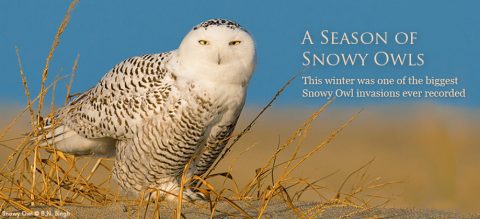The Catbird Seat: A Watcher of Chickadees
By Pete Dunne; illustration by Jeff Sipple
From the Spring 2014 issue of Living Bird magazine.
April 15, 2014

I wrote an article not long ago in which I presented the birding community as having an avocation trapped between two poles. At one pole are those who see birding as a game whose objective is to generate big species lists. The other is populated by those who regard the acquisition and refinement of identification skills as the one true focus of our avocation.
I received a letter from a reader who, while speaking his own mind, might well have been speaking for most bird watchers. He observed that his primary reason for birding was neither of my stated ambitions. All this gentleman asks of bird study is the simple pleasure of watching birds.
I quite agree and will go so far as to say that our most skilled birders and those with North American life lists exceeding 700 species are similarly disposed. Skill is a means, not an end. Lists are more an accounting of memorable encounters than the goal driving those encounters.
My friend and World Series of Birding teammate Will Russell of WINGS Birding Tours confides that his real impetus for coming to New Jersey every May is not to ring up an impressive big-day total, but to savor spring migration during his week of scouting in northwestern New Jersey. On the World Series day, Will can barely bring himself to abandon a productive pocket of warblers, no matter how much behind schedule we fall.
Another friend, Victor Emanuel of Victor Emanuel Nature Tours (VENT), whose world life list must rank among the highest on earth, recently emailed a VENT flash expounding upon the challenge and sublime pleasure of sparrow identification. As Victor notes: “If all birds were as easy to identify as a male Northern Cardinal, birding would not be as satisfying.” Yet I have spent hours in Arizona with Victor savoring such readily identified species as Red-faced Warblers and Painted Redstarts for no other reason than the pleasure it brought us.
After I recently announced my retirement as director of Cape May Bird Observatory, a reporter asked what I planned to do. “Dedicate myself to the quiet contemplation of chickadees,” I told him. What chickadee? Any chickadee—whatever species happens to be coming to the feeder. I’m an equal-opportunity observer. As, for that matter, are all the finest birders I know. So if you are among the millions of bird watchers whose appreciation of birds is anchored in the pure pleasure it brings, be assured you do not stand alone. In fact, your focus is so fundamental and universal it is sometimes overlooked or given short shrift by writers like me.
Back to chickadees: my lack of specificity should not be construed as impartiality. As someone who has seen all the North American tits, including Grayheaded Chickadee, I’d have to rate Blackcapped and Carolina as my personal favorites. Black-capped was the chickadee of my formative youthful birding years in North Jersey, and Carolina the chickadee of Cape May, my avocational hometown favorite.
But Chestnut-backed Chickadees are undeniably handsome and Boreal Chickadees always recall to me the special richness of the boreal forest. One could do a lot worse than be a watcher of chickadees. Or warblers, eh Will? Or sparrows, right Victor?


All About Birds is a free resource
Available for everyone,
funded by donors like you





